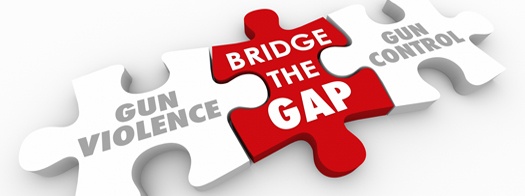
Guns in the United States
- In 2016, firearms were responsible for more than 38,000 deaths and over 116,000 nonfatal gunshot wounds in the United States.
- The United States owns approximately 250 million guns, nearly one for each citizen, and grows about 7 million each year.
- Each year, the United States has a bit over 8,000 murders with firearms.
- According to data from the Gun Violence Archive, a total of 346 mass shootings (5 or more victims) occurred in the U.S. in 2017.
- As of May 17th 2018, 101 mass shootings have already occurred this year.
The Debate
No one disputes these statistics. In fact, a national public opinion survey from the Johns Hopkins Bloomberg School of Public Health found widespread agreement among gun owners and non-gun owners in their support for policies that restrict or regulate firearms.
The survey was fielded in January 2017 and is the third National Survey of Gun Policy conducted by the Johns Hopkins Center for Gun Policy and Research. Researchers used National Opinion Research Center's AmeriSpeaks online panel designed to be representative of the U.S. population. The study sample included 2,124 adults (602 gun- owners, 1,522 non-gun owners) ages 18 years and older.
Why No Action?
Widespread claims that a chasm separates gun owners from non-gun owners in their support for gun safety policies are, in fact, false and distract attention from many areas of genuine agreement—areas that can lead to policy solutions and result in the prevention of gun violence.
Lack of Civil Discourse
Joseph Holt, a business ethics professor at Notre Dame suggests that the problem lies in the fact that our country has lost its ability to engage in civil discourse. He says that “fruitful civil exchange requires humility, fairness, civility, constructive criticism, and appreciation.” All of these, he claims, are lacking in the current debate about gun violence in America. “Fairness is also lacking in the current gun debate. The test of fairness is whether the other side would accept your description of their point of view as accurate and complete. If not, then they say your characterization of their position is unfair.” That position is the beginning of the end of civil discourse.
Forcing Binary Positions
Professor Holt sees the current gun-control debate as a binary standoff.
- You are either for the Second Amendment or you are against it.
- You are either against all gun reforms or you want to take away everyone's guns.
Parkland student Jaclyn Corin tweeted on February 25th, "You're missing the point. We don't want to take away your gun rights, we just want to prevent Americans from owning assault weapons.”
Claiming that those who favor a ban on the sale of assault rifles are anti-Second Amendment is, again, forcing the debate to a binary position. Simply by changing a few words the debate could be opened to a more reasonable exchange of ideas. For example, by simply changing the name “assault weapons” to “weapons of war” you could shift the debate back to the middle. No one opposes a ban on private citizens owning nuclear weapons (“weapons of war”). Because we call assault rifles “guns” rather than “weapons of war” the debate goes binary. More careful thinking would lead to more productive civil discourse.
Civil Discourse is Constructive - Not - Destructive
- Those who take a destructive approach focus on determining everything they can that is wrong with the opposing point of view and then criticizing or deriding it.
- Those who take a constructive approach focus on determining what is best in the opposing point of view and then working with it to build consensus.
This country is suffering from a critical loss of civil discourse not a slavish adherence to the Second Amendment.

